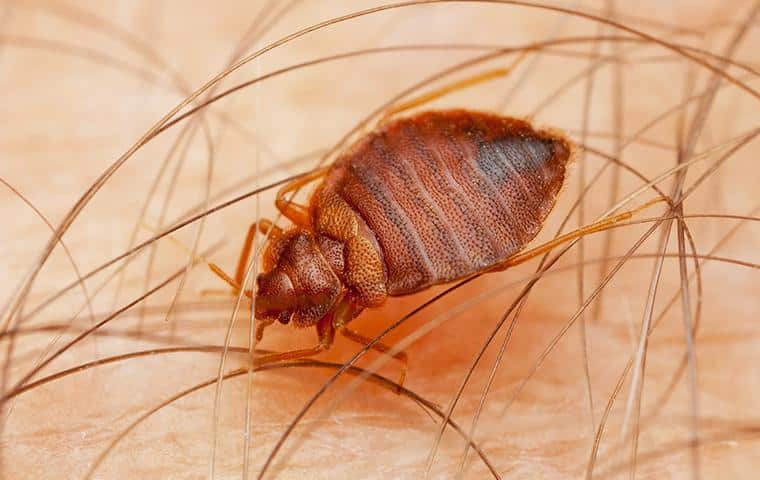Bed bugs are notorious for being some of the most tenacious and difficult pests to eliminate from a home. These tiny, blood-sucking insects can cause sleepless nights, itchy bites, and considerable frustration for homeowners. In this article, we’ll explore the key steps you need to take to tackle a bed bug infestation and regain control of your living space. From early detection to effective treatment options, this ultimate guide will arm you with the knowledge you need to successfully eliminate these unwelcome invaders.
Understanding Bed Bugs: Know Your Enemy
Before diving into bed bug pest control methods, it’s crucial to understand the nature of these pests and why they’re so challenging to eradicate. Bed bugs are small, oval-shaped insects that feed on the blood of humans and animals. They’re nocturnal and can easily hide in the seams of mattresses, cracks in furniture, and even behind electrical outlets. Their ability to hide in small crevices and reproduce rapidly makes them especially hard to combat. With this in mind, let’s explore the essential steps to effectively tackle a bed bug infestation in your home.
Step 1: Early Detection
The first step in dealing with bed bugs is detecting their presence as early as possible. Keep an eye out for the following signs:
- Small, itchy bites on your skin, often in a line or cluster
- Tiny dark spots (bed bug feces) on your bedding or mattress
- Exoskeletons (shed bed bug skins) or tiny white eggs in hiding spots
- A musty, sweet odor in your bedroom
If you notice any of these signs, it’s time to take action and begin the bed bug removal process.
Step 2: Thorough Inspection
Once you suspect a bed bug infestation, a thorough inspection is necessary to determine the extent of the problem. Start by examining your bed, including the mattress, box spring, and bed frame. Pay close attention to seams, folds, and any other hiding spots. Don’t forget to inspect other areas of your bedroom, such as furniture, baseboards, and even electrical outlets.
Step 3: Preparation for Treatment
Before implementing any bed bug treatment, you’ll need to prepare your home. Start by decluttering your living space, as this will make it easier to locate and treat bed bugs. Next, wash and dry all of your bedding, clothes, and any other washable items on the highest heat setting possible. This will help to kill any bed bugs and their eggs. Seal cleaned items in plastic bags to prevent re-infestation.
Step 4: Choose the Right Treatment
There are several methods available for treating bed bug infestations. Some of the most effective options include:
- Chemical Treatments: There are various insecticides specifically designed for bed bug control. These can be applied as sprays or dust formulations to target bed bugs in their hiding spots. Always follow the label instructions and take necessary safety precautions when using chemical treatments.
- Heat Treatment: Bed bugs are highly susceptible to heat, and professional heat treatments can be an effective way to eliminate them from your home. Specialized equipment is used to raise the temperature in the infested area to a level that is lethal to bed bugs and their eggs.
- Cold Treatment: Freezing bed bugs can also be an effective method for eliminating them. Items that can’t be washed, such as shoes or books, can be placed in a sealed plastic bag and put in a freezer for a minimum of four days at 0°F (-18°C) to kill bed bugs.
- Encasements: Using mattress and box spring encasements can help trap bed bugs and prevent them from feeding on you. Make sure to choose encasements specifically designed for bed bug protection, as they will have features like tight seams and zippers to prevent bed bugs from escaping.
Step 5: Monitor and Follow-up
After implementing your chosen treatment method, it’s essential to monitor the situation closely and follow up with additional treatments if necessary. Keep an eye out for any signs of bed bug activity, such as new bites or fecal spots. You may need to repeat treatments several times to completely eliminate the infestation.
Step 6: Prevention
Once you’ve successfully eliminated bed bugs from your home, it’s crucial to take steps to prevent future infestations. Here are some tips to help you keep bed bugs at bay:
- Regularly inspect your bed and bedroom for signs of bed bug activity.
- Use a protective cover on your mattress and box spring to make it more difficult for bed bugs to hide.
- Be cautious when bringing second-hand furniture into your home, as it may harbor bed bugs.
- When traveling, inspect hotel rooms for signs of bed bugs and keep your luggage off the floor to reduce the risk of bringing bed bugs home with you.
- Seal cracks and crevices in walls, baseboards, and around electrical outlets to eliminate potential hiding spots.
Conclusion:
Dealing with a bed bug infestation can be a challenging and frustrating experience, but with the right knowledge and approach, it’s possible to reclaim your home from these unwelcome invaders. By following the steps outlined in this ultimate guide to bed bug pest control, you’ll be well-equipped to detect, treat, and prevent bed bug infestations in your home. Remember that patience and persistence are key when it comes to bed bug removal, so don’t be discouraged if it takes multiple treatments to achieve the desired results.








